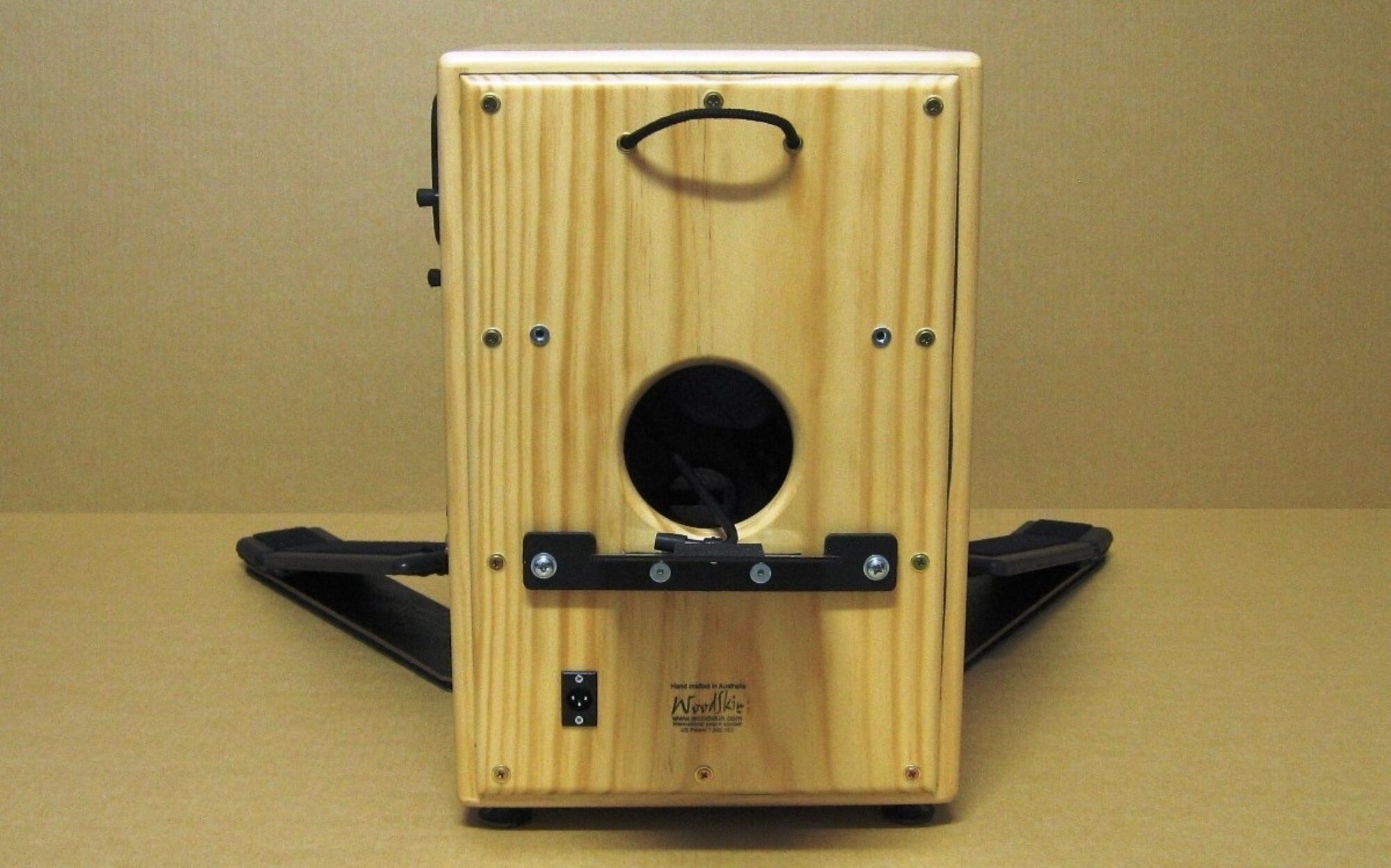
Hi, Im Mark Aspland. One of my earliest memories, aside from the taste of my mother’s cooking, is playing drums at her feet by banging on saucepans with a wooden mixing spoon. My parents eventually realised that in order to preserve their kitchen utensils I would need a drum. And so on my next birthday I received a red tin marching drum, sticks and a strap, my first of many drums.
My primary school was blessed to have the luxury of a marching band. Needless to say most of the boys were eager to join, but alas, there were only so many drums to go around. Prepared to do anything to be a part of the band I volunteered to carry the bass drum. This evolved to playing it whenever Gary (the bass master) was absent. A continual shortage of equipment prevented me from taking the next step of playing the snare drum. Until one day, when packing the gear away, I noticed an old broken snare drum, hidden under a cloth. I asked to be allowed to repair it and was given the go ahead. Next I knew I was playing snare in the band, proud as punch. This was my first introduction to percussion construction, aged around 9.
Dad’s garage was well equipped. Being a cabinet maker, all the necessary elements for drum making, amongst other things, were there at my disposal. My Grandfather, also a master cabinet maker, ran a french polishing and cabinet making business. I was fortunate to always be around, and able to participate in all things woodworking, happy at any stage to be making or finishing my latest project. My father knew the answers to all my questions.
High school in the 60’s and 70’s saw another school without a great deal of drumming equipment, save an orchestral timpani set. By this stage I wanted a drum kit, more than air. I purchased the drum kit eventually, but it’s absence exposed me to orchestral percussion. I grew my hair long, idolised John Bonham, Cozy Powell, Billy Cobham and a plethora of others and played my drum kit every night in the room next to the kitchen. My mother never complained. At the same time I was taking orchestral and marching percussion lessons. These later became drum kit lessons.
University days were a continual roll of bands and musical pilgrimages. If we weren’t watching bands, or listening to music, we were playing it. We did manage, however, to squeeze in some school work. I studied electronics and was exposed in those years, and many after, in research and development, to the principles and physics of sound. I have spent the last 15 years working in ultrasonics.
A move to Perth on the West coast of Australia in the early eighties, saw an exposure to the self sufficient attitude of the Sandgropers. “If we cant get it, we’ll make our own”. Working as a customer service engineer on an enormous range of professional studio audio gear, I got to see life on both sides of the mixing booth, as a performer and an engineer. These very early digital days still employed tape machines and hybrid digital/analog mixing desks. Being on 24 hour call to keep this equipment going, I prayed the gear wouldn’t fail whilst I was being recorded on the other side of the glass. Needless to say I was the one who would have to fix it, and playing was much better fun.
Perth is were I returned, in earnest, to percussion. The Perth music scene was very healthy, with lots of unplugged gigs available. This was perfectly suited to the conga/bongo combination. Gradually I began to introduce other instruments, tambourine, clave, shakers etc. until I required a suit case to carry it all. One gig in particular, was what you might call semi-plugged. This required not quite a drum kit, but a little more than just hand drums. I adapted a tom-tom into a small bass drum to suit. This led to me constructing all the forms of percussion that I required. From broad sounding shakers made from tropical nut shells, to brass chimes, to a kind of shaker that also provided an accentuating clap sound, made from tropical bean pods strapped together. During this period I performed with, amongst others, The Nobodies (early Tall Tales and True), Mums Tennis Friends, Burma Shave, The World Looks On, CJ’s Workshop, You and Who Else, and Buster (ex the Swingers) and Lil. The nature of percussion lends itself to improvisation, so I was fortunate enough to be able to accompany a number of solo to trio performers unrehearsed, the most memorable being the Waifs.
I eventually moved back to Melbourne, and appeared regularly at AJ’s cafe in the South East. One of the highlights was occasionally accompanying Fiona Boyes, again unplugged. During this period, and after recording on the Waif’s first album, I started tinkering with my own home recording studio, that, and learning Indian Tabla’s. World music was now well entrenched into our culture, opening the floodgates for all forms of percussion. I first came across the cajon whilst living in Perth through a friend teaching Spanish dancing. At that stage, however, I was more focused on Latin percussion. Years later when I revisited the cajon, I saw the potential for a very versatile cross between a bass, snare, conga, djembe and more. Some major changes were required, and these implemented became the Woodskin Cajon.
The response I have received from fellow musicians and avid listeners since, has been a true delight. A recent highlight was providing Billy Bragg’s drummer, Martyn Barker with one. The look on his face when he first started playing it was typical of why I have decided to expand this endeavour further.

